Ladies Tudor Chemise
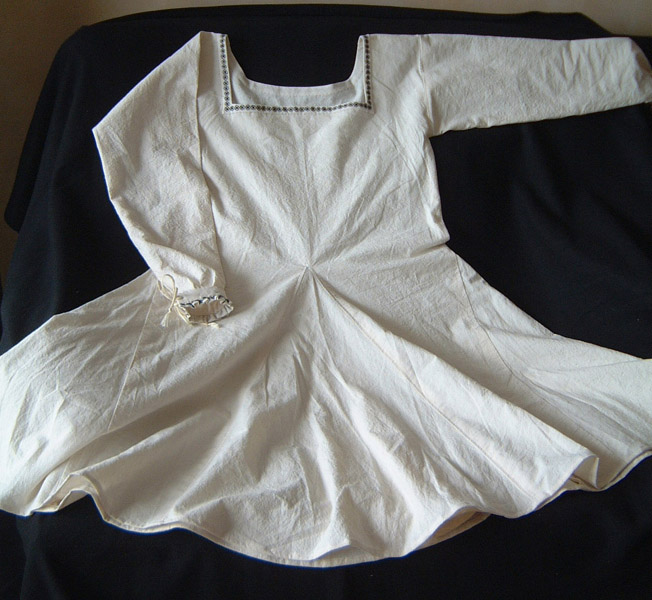
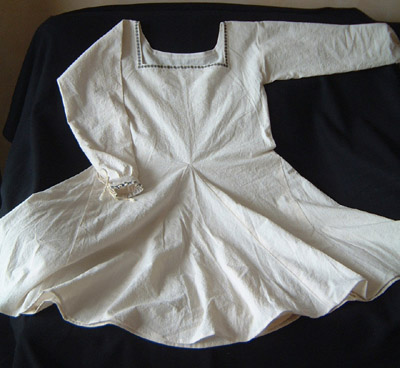
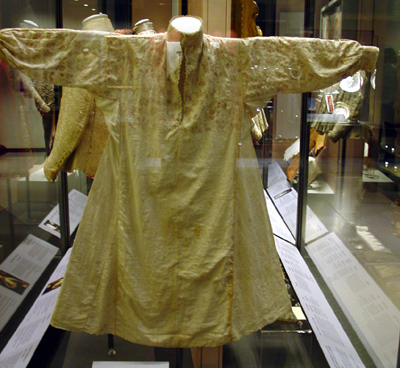
Above on the left is a photo of my chemise. On the right is a photo of a smock in the
Victoria and Albert museum, taken from
The Elizabethan costuming page. It is a women's smock from 1630. Although this is 100 years after the date my dress is designed
to recreate, being unable to find documentation for a smock in my period, and looking at how closely the pattern resembles tunics and dresses from several hundred years earlier (see the 13th C Tunic of St. Louis).
I assumed the pattern would be very similar.
Modifications I have made from the original:
* addition of gores in the front and back centre
* elimination of the under-arm gussets as I do not require them
* elimination of the pleats in the back at the collar
* changing the collar to match a tudor dress rather than an elizabethan one.

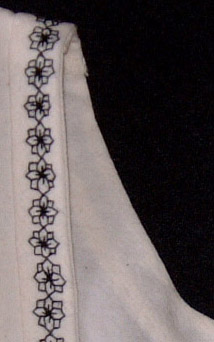
The collar is the same shape as the neckline of the corset, and should be just barely exposed when the corset is worn. This ensures the skin never touches the corset or the gown, both garments
which cannot be properly laundered.
I have sewn the blackwork on a facing. This way, if the chemise wears out before the collar does, I can apply the blackwork to a new chemise. The blackwork itself is taken from the Italian Blackwork
Patterns page (near the bottom) of Bronwen's Blackwork Library.
The blackwork I have chosen is extremely simple, especially when compared to portaits and extant garments. However, one must keep in mind the reason why these garments have survived. The more simple, everyday garments would not be kept and treasured over generations, thus it is likely that
those garments which have survived were special. Similarily, if you were having your portrait painted, you would wear your very best. The gown I have made is fairly high-class, and thus the chemise should maybe have had more elaborate blackwork. However, as it was my first attempt at blackwork and only my third embroidery project, I decided to keep the scope small.
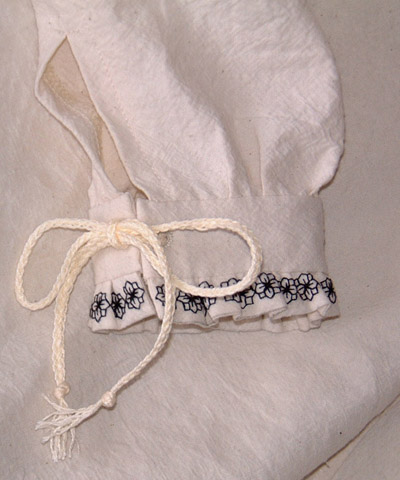
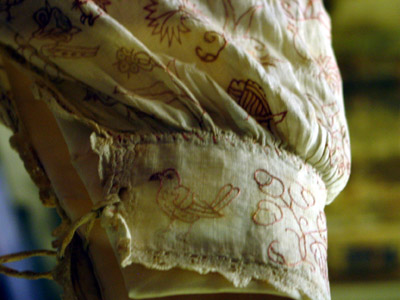
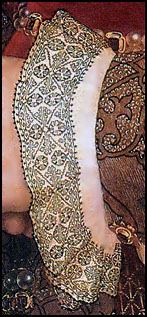
Above on the left is a close-up photo of the cuff on my chemise. In the centre is a closeup of the same smock in the V&A I used as the basis of the pattern for the smock. On the right is a detail of a portrait of Jane seymour.
I have gathered the sleeve on to the cuff in the same manner as the extant chemise, though I believe my sleeve may be a little less full. I have sewn single eyelets on each side and tied them with a single, unattached tie similar to the extant garment. I am unsure as to what is being used as a
tie on the extant garment and have chosen to use fingerloop braiding, documented in the Complete Anachronist issue #108.
Instead of using bobin lace, I have applied a blackworked ruffle, which is similar to the blackworked ruffle seen on the Jane Seymour portrait, though narrower and with a simpler blackwork pattern.
In this image, if you look closely, you can also see that all my seams are finished using a serger, and sewn using a modern machine. Though completely out of period, I was working under a time constraint, and it is not visible when I am wearing the garment, thus I made the decision to use
all the resources available to me.

The eyelet was created by poking an awl through the fabric and further widening the hole using a 4.5 knitting needle. Pushing the threads apart rather than cutting a hole makes the eyelet stronger.
Return to my Tudor Costume page
Return to my home
Last updated April 5, 2008









